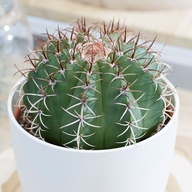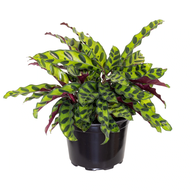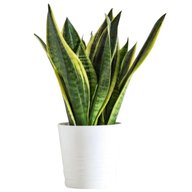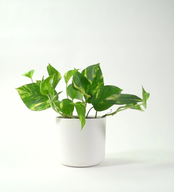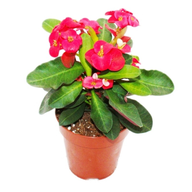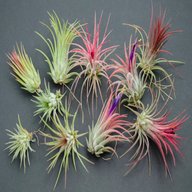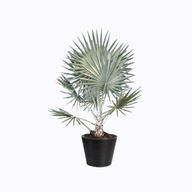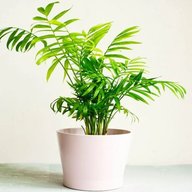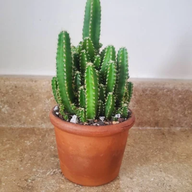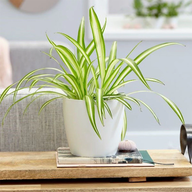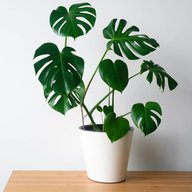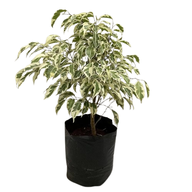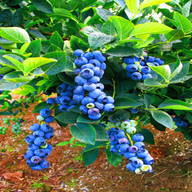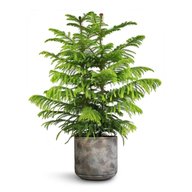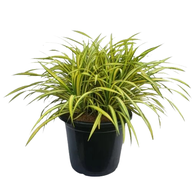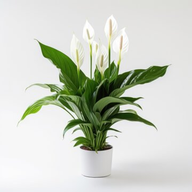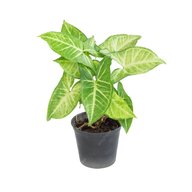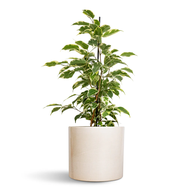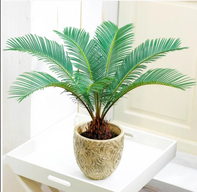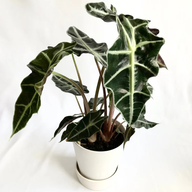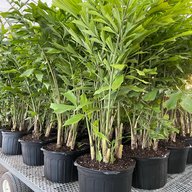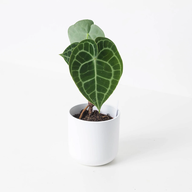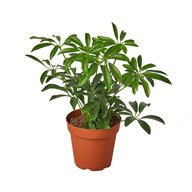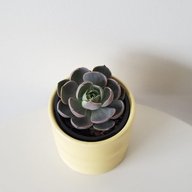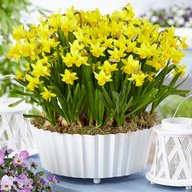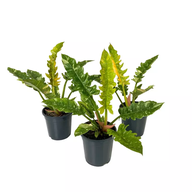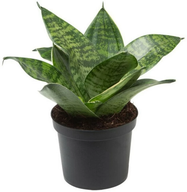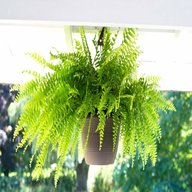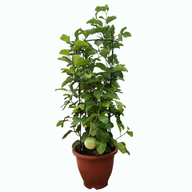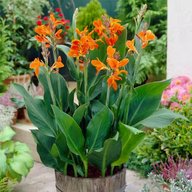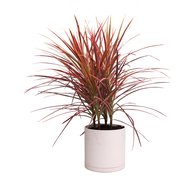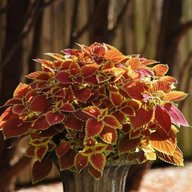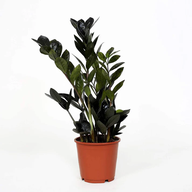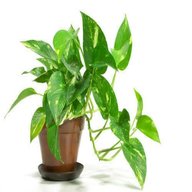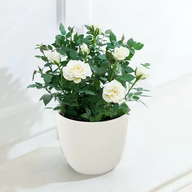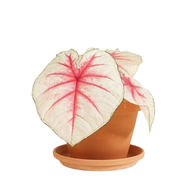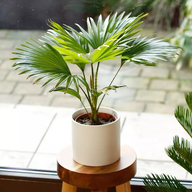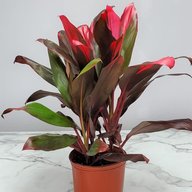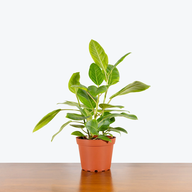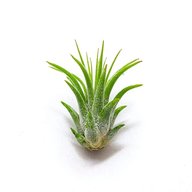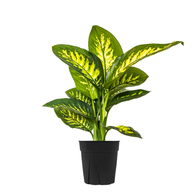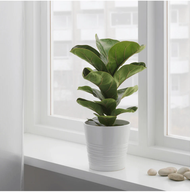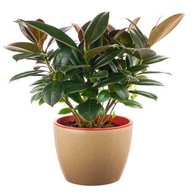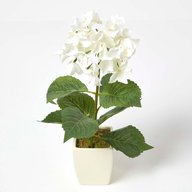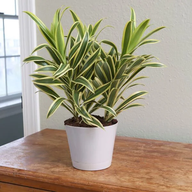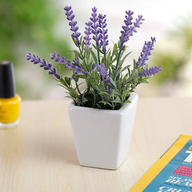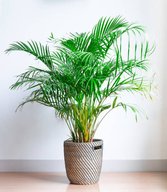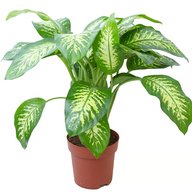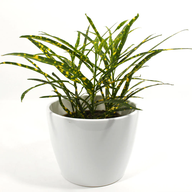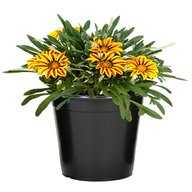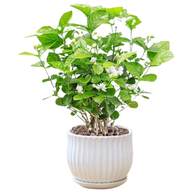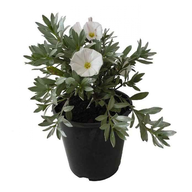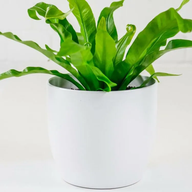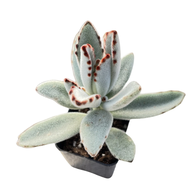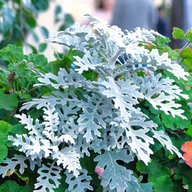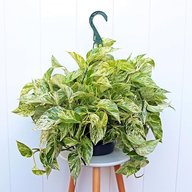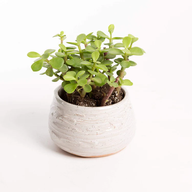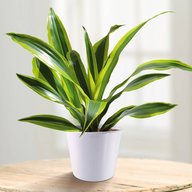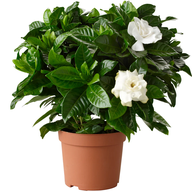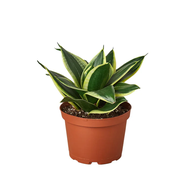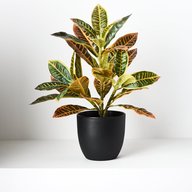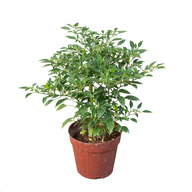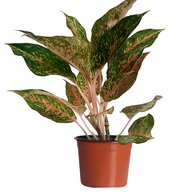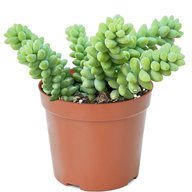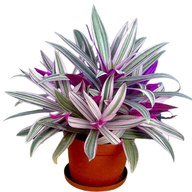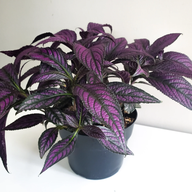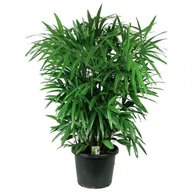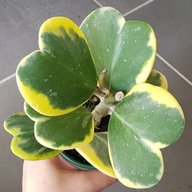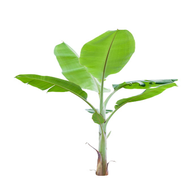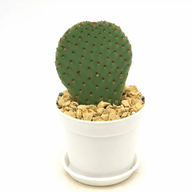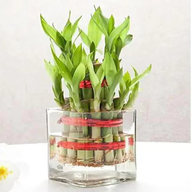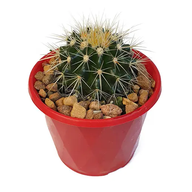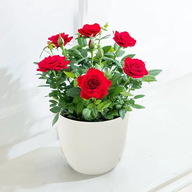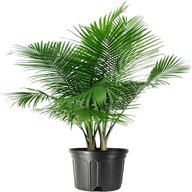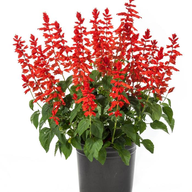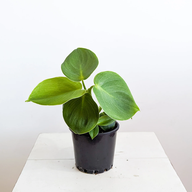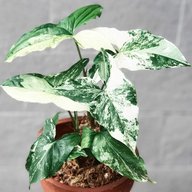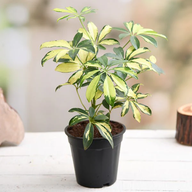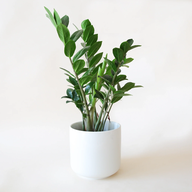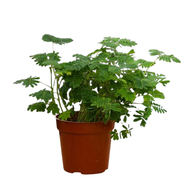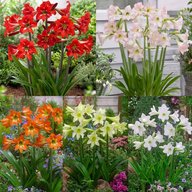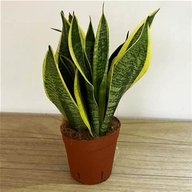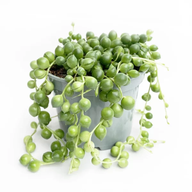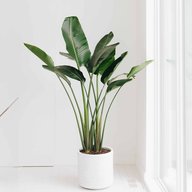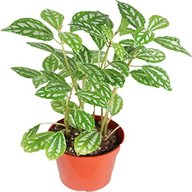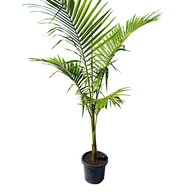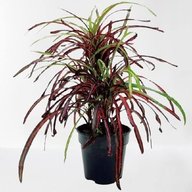Rubras have highly variable shapes and colors. They are typically light green to white and can blush pink when in strong light. When in bloom they will blush red with a purple flower. There are open form, tall form, soft leaf forms etc. Each one will be unique and can vary from the photos.
Scientific Name: Chlorophytum comosum
Common Name: Spider Plant
Description: The Spider Plant (Chlorophytum comosum) is a popular, easy-to-grow houseplant with arching, green and white variegated leaves. This perennial herbaceous plant produces small white flowers and plantlets, making it an attractive addition to any indoor garden. Known for its air-purifying qualities, the Spider Plant thrives in indirect sunlight and is tolerant of various indoor conditions, including low light and irregular watering.
Uses:
- Indoor Decoration: Spider Plants are commonly used to enhance indoor spaces due to their attractive foliage and cascading growth habit.
- Air Purification: They are effective at removing indoor air pollutants like formaldehyde, xylene, and toluene, contributing to a healthier living environment.
- Pet-Friendly: Non-toxic to pets, making it a safe choice for homes with animals.
- Easy Maintenance: Ideal for beginner gardeners due to their resilience and minimal care requirements.
The Spider Plant is an excellent choice for those looking to improve their indoor air quality and add a touch of greenery to their home with minimal effort.
Canna Cleopatra, a variety of Canna indica (commonly known as Canna Lily), is a stunning and unique perennial plant known for its vibrant and variegated flowers and foliage. Canna lilies are native to tropical and subtropical regions of the Americas and are prized for their ornamental beauty.
- Appearance:
- Flowers: The flowers of Canna Cleopatra are particularly striking, featuring a mix of bright red and yellow petals, often with speckled patterns or streaks. The bi-colored flowers create a dramatic and eye-catching display.
- Leaves: The large, lush leaves are paddle-shaped and can be green or burgundy, sometimes exhibiting variegation with stripes or patches of different colors.
- Height: Canna Cleopatra can grow up to 4-6 feet tall, making it an excellent choice for adding height and color to garden beds or containers.
Care Tips:
Light:
Outdoors: Canna lilies thrive in full sun but can tolerate partial shade. They need at least 6 hours of direct sunlight daily for optimal blooming.
Indoors: If growing in containers indoors, place the plant in a bright, sunny location.
Watering:
Keep the soil consistently moist but not waterlogged. Water regularly during the growing season, especially in hot and dry conditions.
Reduce watering in the winter when the plant is dormant.
Soil:
Plant in rich, well-draining soil. A mixture of garden soil with compost or well-rotted manure works well.
Ensure good drainage to prevent root rot.
Temperature:
Prefers warm temperatures, ideally between 70°F and 90°F (21°C - 32°C).
Canna lilies are frost-sensitive. In cooler climates, dig up the rhizomes before the first frost and store them in a cool, dry place over winter.
Humidity:
Canna lilies enjoy high humidity but can adapt to average humidity levels.
In dry climates, increase humidity around the plant by misting or placing a tray of water nearby.
Fertilization:
Feed with a balanced, water-soluble fertilizer every 4-6 weeks during the growing season.
Use a high-phosphorus fertilizer to promote blooming.
Pruning:
Deadhead spent flowers to encourage continuous blooming.
Cut back the foliage after the first frost if growing in colder climates or in the fall if storing the rhizomes.
Propagation:
Propagate by dividing the rhizomes in spring. Ensure each division has at least one growing point.
Plant the divisions in prepared soil with the eyes (growth points) facing up.
Pests and Problems:
Watch for pests such as aphids, slugs, snails, and spider mites. Treat infestations with appropriate insecticides or natural remedies.
Ensure good air circulation to prevent fungal diseases like powdery mildew or rust.
Safety:
Generally safe and non-toxic to pets and humans, making it a good choice for gardens frequented by children and animals.
#CannaCleopatra #CannaIndica #CannaLily #Perennial #TropicalPlant #OrnamentalPlant #BiColorFlowers #GardenBeauty #EasyCare #FullSun #MoistSoil #PollinatorFriendly #ContainerPlant #RhizomePropagation #VibrantFoliage #EyeCatchingDisplay #CannaCleopatra #CannaIndica #CannaLily #PerennialPlant #GardenPlants #TropicalPlants #OrnamentalFlowers #BiColorFlowers #GardenBeauty #EasyCarePlants #PakistaniGardens #PlantsForSale #BuyPlantsPakistan #PakistanGardening #GardenLovers #VibrantFoliage #PollinatorFriendly #FloweringPlants #HomeGarden #IndoorOutdoorPlants #GardenDecor #LushGarden #BrightBlooms #GreenThumb #PlantLovers #GardeningInPakistan
Dieffenbachia, commonly known as Dumb Cane or Leopard Lily, is a popular houseplant known for its large, attractive leaves. Native to the tropical regions of Central and South America, this plant is prized for its striking foliage, which features variegated patterns in shades of green, white, and yellow. Dieffenbachia can grow up to 5 feet tall indoors, making it an excellent choice for adding a touch of the tropics to your home or office.
Care Tips:
Light:
- Indoors: Prefers bright, indirect light but can tolerate low light conditions. Avoid direct sunlight, which can scorch the leaves.
- Outdoors: If placed outdoors, choose a spot with filtered light or partial shade.
Watering:
- Water the plant when the top inch of soil feels dry. Ensure the soil remains consistently moist but not waterlogged.
- Reduce watering frequency in the winter months when the plant's growth slows down.
Soil:
- Use a well-draining potting mix. A mix designed for houseplants or a blend of peat, perlite, and potting soil works well.
- Ensure the pot has drainage holes to prevent water from accumulating at the bottom.
Temperature:
- Thrives in warm temperatures between 60°F and 75°F (15°C - 24°C).
- Protect the plant from cold drafts and temperatures below 50°F (10°C).
Humidity:
- Prefers high humidity but can adapt to average indoor humidity levels.
- Increase humidity by misting the leaves regularly or placing a humidity tray nearby.
Fertilization:
- Feed with a balanced, water-soluble fertilizer every 4-6 weeks during the growing season (spring and summer).
- No need to fertilize during the winter months.
Pruning:
- Prune to remove yellow or damaged leaves and to maintain the desired shape.
- Wear gloves when handling the plant, as its sap can cause skin irritation.
Propagation:
- Easily propagated through stem cuttings. Allow the cut ends to callous over for a few days before planting them in moist soil.
- Keep the soil lightly moist until the cuttings establish roots.
Pests and Problems:
- Watch for common houseplant pests like spider mites, aphids, and mealybugs. Treat infestations with insecticidal soap or neem oil.
- Ensure good air circulation to prevent fungal diseases like root rot.
Safety:
- The sap of Dieffenbachia is toxic if ingested and can cause irritation. Keep away from pets and children.
By following these care tips, your Dieffenbachia will thrive and bring a touch of natural beauty to any indoor space.
#Dieffenbachia #DumbCane #LeopardLily #Houseplant #IndoorPlants #TropicalPlants #VariegatedFoliage #PlantSale #PakistanGardening #PlantsForSale #BuyPlantsPakistan #GardenLovers #HomeDecorPlants #EasyCarePlants #GreenThumb #IndoorJungle #AirPurifyingPlants #PlantLovers #HouseplantCommunity
Showing 1-88 of 88 item(s)
- Previous
- 1
- Next
